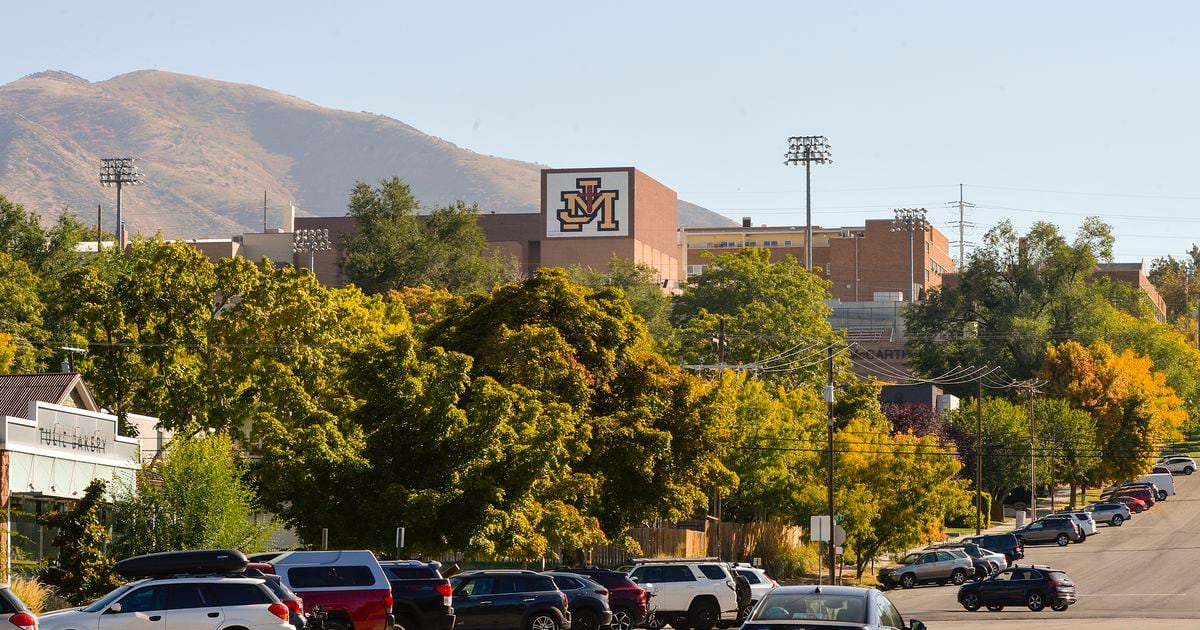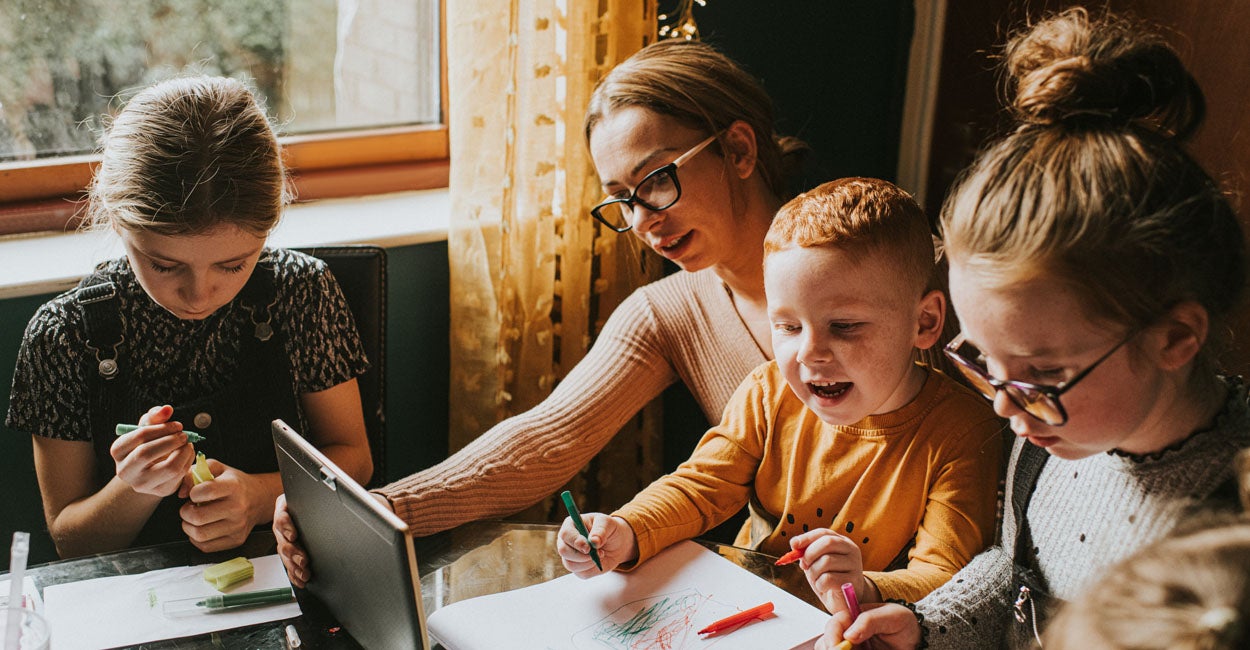Utah lawmakers are once again considering a school voucher program that would use taxpayer funds to send students to private schools.
The latest proposal — the “Utah Fits All Scholarship” in HB215 — comes after a similar attempt failed last year.
Supported by conservatives, the program is touted as a way to give parents and kids more choice to find a classroom that works better for them. The scholarship, said bill sponsor Rep. Candice Pierucci, R-Herriman, is meant to help lower income families afford private schools.
Pierucci’s bill includes a $6,000 salary and benefits raise for teachers across the state. It’s meant as a bargaining chip: Approving the vouchers means educators in public schools would see bigger paychecks.
But critics object that the proposal would financially hobble Utah’s public schools, which are already among the least funded in the country. The largest teachers union in the state is leading the opposition.
Here’s what you need to know as the debate heats up.
What are vouchers, generally, and how do they work?
Vouchers can be labeled as tax credits, tax rebates, education savings accounts, backpack funding, or, like in this proposal, scholarships. They’re all the same concept.
They work by taking money collected from taxpayers and setting it aside in a fund for vouchers. That money is then awarded to individual students, who use it to cover all or part of their attendance at a private school.
This creates a funding dilemma for public schools.
In Utah, an amount of money called a weighted pupil unit, or WPU, is awarded to schools for each K-12 student who enrolls.
If 3,000 kids enroll, for instance, the school gets the value of 3,000 WPUs (not counting additional add-ons for students with disabilities). The WPU is currently set by the state at about $4,000.
If fewer kids attend — leaving public schools for private schools — then public schools get less funding. Inversely, private schools that don’t have the same charge to educate all students get more of the share of money.
What does this new bill propose?
In Pierucci’s bill, each student in the program would be awarded $8,000 in a scholarship — or roughly double the WPU allocated to a kid in public school — to attend a private school, including those run by a religious organization.
A family could also use the money for home schooling, such as to pay for books or field trips or tutoring.
“I know everyone wants to call this a voucher bill,” she said. “But I’ll forever say this is a scholarship program because it’s more expansive.”
(Francisco Kjolseth | The Salt Lake Tribune) Rep. Candice Pierucci, R-Herriman, is pictured on Friday, March 4, 2022.
The bills calls for the scholarship administrator to give preference to students who are in families living below the poverty level.
Students enrolled in any public school in the state cannot use the funds; that includes the many charter schools here, which are public. A student could not, for instance, attend a public school during the day and then use the scholarship for tutoring after school, Pierucci said.
Haven’t we been here before?
Yes. Republican lawmakers championed what would have been the nation’s most comprehensive education voucher proposal in 2007. The measure passed, even with strong opposition from parents, teachers and advocates.
Those groups then rallied to put a referendum on the ballot to rescind the measure, and they won. More than 62{e4f787673fbda589a16c4acddca5ba6fa1cbf0bc0eb53f36e5f8309f6ee846cf} of Utah voters sided with the repeal effort.
Pierucci insists her measure this year is not like that one.
But it’s similar to the failed bill she proposed last year, which requested $36 million for the “Hope Scholarship.” It also advocated for vouchers that were double the amount of the WPU and favored lower income students. It was defeated in the House on a 22-53 vote.
What’s driving this push now?
Pierucci said she believes parents want more choice with their kids’ education. That comes as cultural wars have heated up in the classroom, with attacks on books and teaching about race.
The COVID-19 pandemic, she suggests, also showed that not all parents are happy with traditional K-12 schools or charters. State data does show an increase in students shifting to home schooling or private schools when the pandemic was at its height, in fall 2020. But by a year later, the numbers pointed to most of those students returning to their previous public schools.
Still, Pierucci says she’s heard from constituents who want “a bigger approach to school choice.” She said it doesn’t matter if the vouchers only help a handful of families, or if the number of students attending private schools or in home schooling doesn’t dramatically increase.
“That’s not the goal,” she said. “The point is to give people the choice and help them pay for it.”
Minority Senate Whip Kathleen Riebe, D-Cottonwood Heights, worries that mindset — and other parts of the bill — mean there’s no accountability for the program.
(Trent Nelson | The Salt Lake Tribune) Sen. Kathleen Riebe, D-Cottonwood Heights, is pictured on Friday, March 4, 2022.
Utah has an open enrollment system where families can choose to send their kids to whatever school they want — whether that’s their neighborhood school or a charter across town. Riebe says that means the system is already set up for choice if something is not working for a child. She’s been in education in Utah for 22 years, currently working as a school technology specialist in Granite School District.
She worries the bill is coming as part of a national Republican push to privatize education — from those angry about public school policies or curriculum they see as too progressive — and to force more competition in schooling.
She points to current Utah Senate President Stuart Adams, R-Layton, who also sits on the board of the conservative American Legislative Exchange Council. One of the top education platforms for that GOP group is vouchers; and Stuart has said he supports the bill.
The proposal has the support of several national groups, including the conservative group Heritage Action.
How much money would be budgeted for this?
The bill is requesting $42 million for the voucher program. At $8,000 per scholarship, plus administrative costs, Pierucci expects that to cover about 5,000 students.
Pierucci said she arrived at the $8,000 figure by combining the roughly $4,000 WPU with the average amount spent by each Utah school district on students, which is about another $4,000.
That second portion is collected locally, through property taxes, and is subject to local control and decision making on how to spend it.
Riebe, though, feels the scholarships are justifying taking state funding to double what a student in the public system would normally be allocated by the state alone. She doesn’t think it’s fair to calculate local funding into that, especially when it varies based on where the district is located.
Why is the voucher program connected to teacher salary increases?
Another $200 million is requested in the bill to cover the $6,000 teacher salary and benefits raises statewide. Pierucci said she wanted to tie the two together because she sees it as investing in the most important parts of education: students and teachers.
“To me, this is about showing we believe in the system. We want to fix the public education system,” by adding more funding for educators, she said.
She also said she believes people have a “scarcity mentality” about funding for education in Utah, which is ranked second to last, ahead of Idaho, for spending per pupil. But she said this money isn’t siphoned from education and the Legislature still intends to provide a historic increase for education funding this session (even with talk of tax cuts).
Utah Gov. Spencer Cox had recommended the pay increase for teachers in his proposed budget, but has yet to say whether he supports the two proposals being tied together. His spokesperson didn’t immediately respond to a request for comment, but last year, he said he’d veto the voucher bill.
The Utah State Board of Education also opposed the voucher bill last session. It has not taken a position yet this year.
The Utah PTA opposes the new bill, saying although it “supports the increase of teacher salaries, we cannot support the distribution of up to $8,000 per student to education service providers” in the private sector.
The Utah Education Association is calling for the two parts of the bill to be decoupled. “The educator salary raises should not come with strings attached,” said Renée Pinkney, president of the association.
(Rachel Rydalch | The Salt Lake Tribune) UEA President Renée Pinkney, left, leans over to Kelly Whited Jones at a rally at the Capitol in Salt Lake City on Saturday, Jan. 29, 2022.
What do opponents say?
Opponents are obviously worried about the cost of the vouchers and the impact on public education funding. Pinkney also believes the setup furthers inequalities.
“When you are taking public dollars away from public schools and giving them to private schools,” she said, “you are creating opportunity gaps for students.”
The average tuition for most private schools in the state is roughly $11,000, according to Private School Review, which means the $8,000 scholarship may not cover all of the cost for some families. Tuition at both Waterford and Rowland Hall, two popular private schools in the state, are both more than $20,000.
Other teacher unions, including the Ogden Education Association, have joined in the opposition; Ogden teachers are worried about the lack of regulations for private schools and home schooling.
Private schools don’t have to hire licensed teachers. The state does not set their curriculum; they can choose what to teach. They can enroll students on a preferential basis, allowing for possible discrimination.
Private schools also are not required to provide services for students with disabilities, like public schools are. In fact, to accept the voucher, the bill will require parents sign a waiver relinquishing their rights to sue if they have a disability discrimination claim.
“Private education is not subject to the same oversight as public education,” the Ogden association wrote. “That is concerning when spending public dollars.”
Parents who choose to home school their students are similarly not held to any standards in the state.
How many private schools are there in Utah, and how many students are in home schooling?
There are 235 private schools in the state, according to data from the Utah State Board of Education.
The state is not required to and doesn’t track exactly how many students attend those schools. The best estimate from the National Center for Education Statistics is that roughly 3{e4f787673fbda589a16c4acddca5ba6fa1cbf0bc0eb53f36e5f8309f6ee846cf} of K-12 students in Utah are enrolled in private institutions.
Some consider that to be too high, but it would amount to about 15,000 students. By comparison, Utah’s public schools have 675,000 kids enrolled. A higher percentage — 11{e4f787673fbda589a16c4acddca5ba6fa1cbf0bc0eb53f36e5f8309f6ee846cf} — opt for charter schools, which are also public.
The only state with a smaller percentage of students in private schools is Wyoming at 2{e4f787673fbda589a16c4acddca5ba6fa1cbf0bc0eb53f36e5f8309f6ee846cf}, according to the National Center for Education Statistics.
The majority of zip codes in Utah do not have a private school.
“Private institutions in Utah are centered along the Wasatch Front,” the Ogden Education Association notes. “This discriminates against our rural students and families, creating an inequity.”
(Christopher Cherrington | The Salt Lake Tribune)
The state also doesn’t regularly track the home school population; its last estimate was in 2016, when the total was roughly 16,000 students. National estimates say it’s grown at a slow and steady pace, putting it probably around 21,000 or less now.
In 2020 and 2021 — during the pandemic — the Utah Board of Education did track how many students were signing transfer papers to leave public schools. According to that data, there was a jump in 2020 for those switching to home school.
In a typical year, Utah sees about 900 to 1,000 of those transfers. That year, there were 3,375. But in 2021, the number dropped back down to normal again, with 1,227. Many of those who left returned to their previous public schools.
The same happened with transfers to private schools.
Overall, about 95{e4f787673fbda589a16c4acddca5ba6fa1cbf0bc0eb53f36e5f8309f6ee846cf} or more of K-12 students in the state are going to public schools.
What does the data say? Are vouchers effective?
In Louisiana, students in the voucher program saw their math and science scores drop dramatically. Similar studies of Ohio’s and Indiana’s voucher programs found similar results.
In Milwaukee’s program, students who participated were more likely to graduate high school than those in the public system. But the state ranked near the bottom of all states in math scores, which worsened since the launch of the subsidies. And studies found that students who returned to public schools after trying the vouchers saw significant improvement.
In Arizona, New Hampshire and Wisconsin, more than 70{e4f787673fbda589a16c4acddca5ba6fa1cbf0bc0eb53f36e5f8309f6ee846cf} of the funding for vouchers went to students who were already attending private schools before the voucher programs were created there, according to the National Coalition for Public Education, which opposes vouchers.
Riebe says she doesn’t understand why the data on in the ineffectiveness of vouchers isn’t being considered by the Utah Legislature. “This shouldn’t be how we run legislation,” she said.
She’s proposing that the state instead pause the voucher program and conduct a pilot study. That would entail testing a student, for instance, who left a private school school for a public school at the start of that switch and then a year later to see if the child improved.
The current proposal from Pierucci specifically prohibits doing any kind of research like that.
What’s next?
The bill will move through committee hearings, where the public can weigh in. It passed its first committee on Thursday and goes next to the House floor and then Senate. As it’s still early in the session, it’s very likely to change before any possible final passage.
(Francisco Kjolseth | The Salt Lake Tribune) Students from the private Waterford School in Sandy are pictured in 2017.





